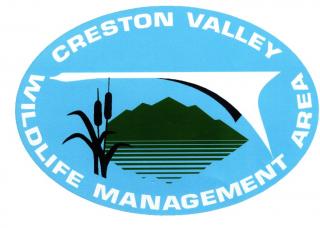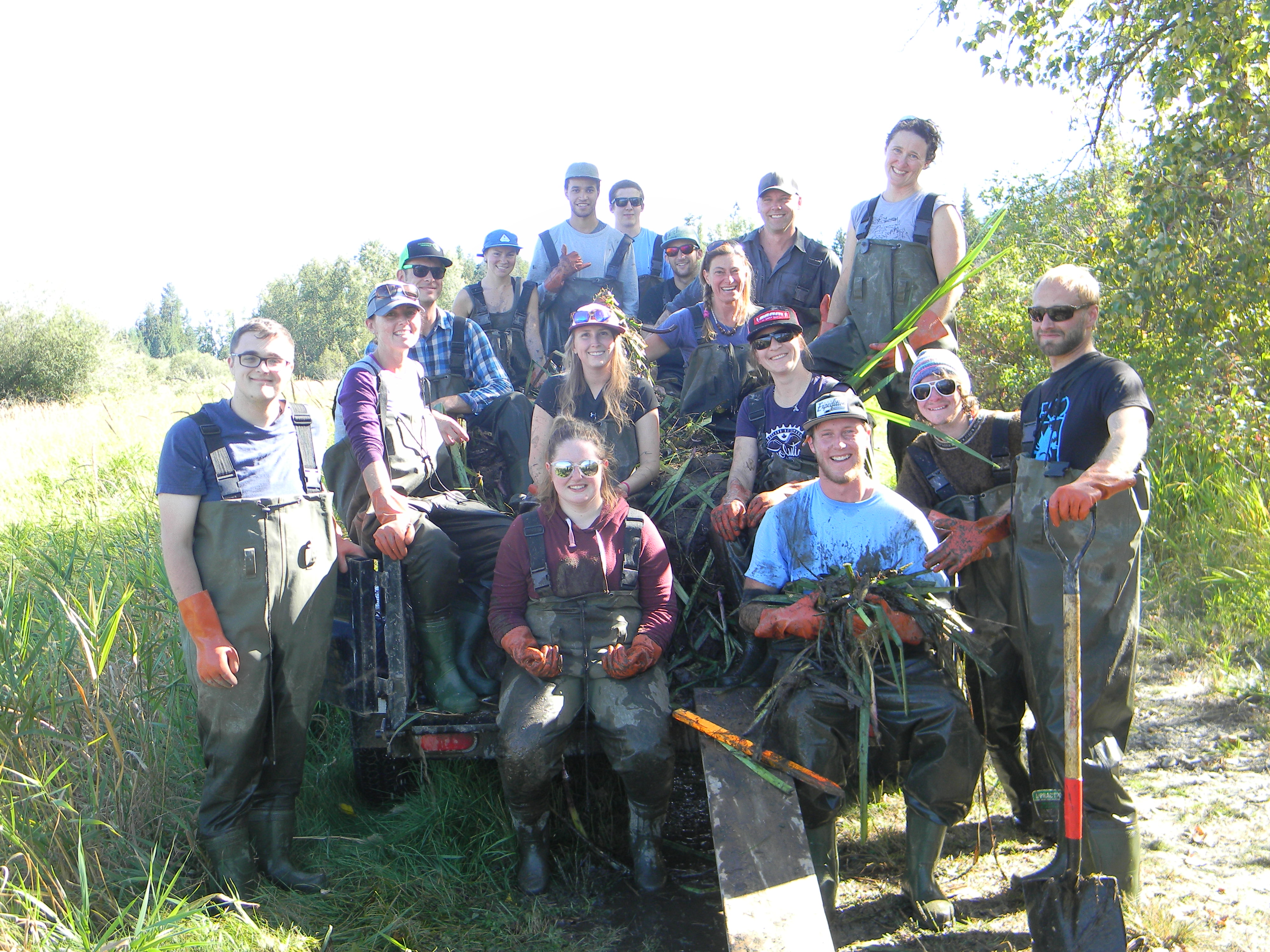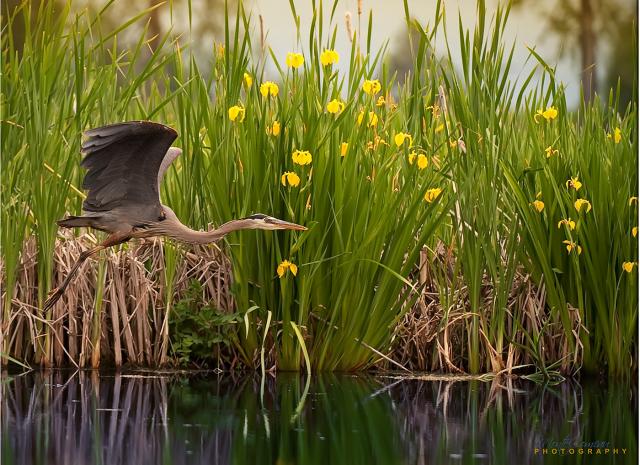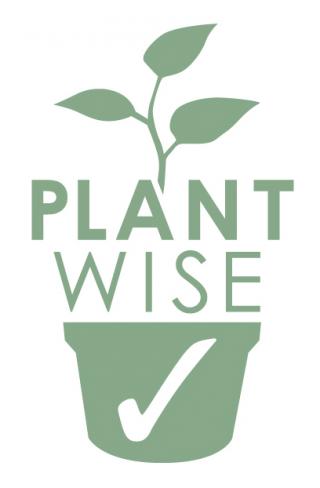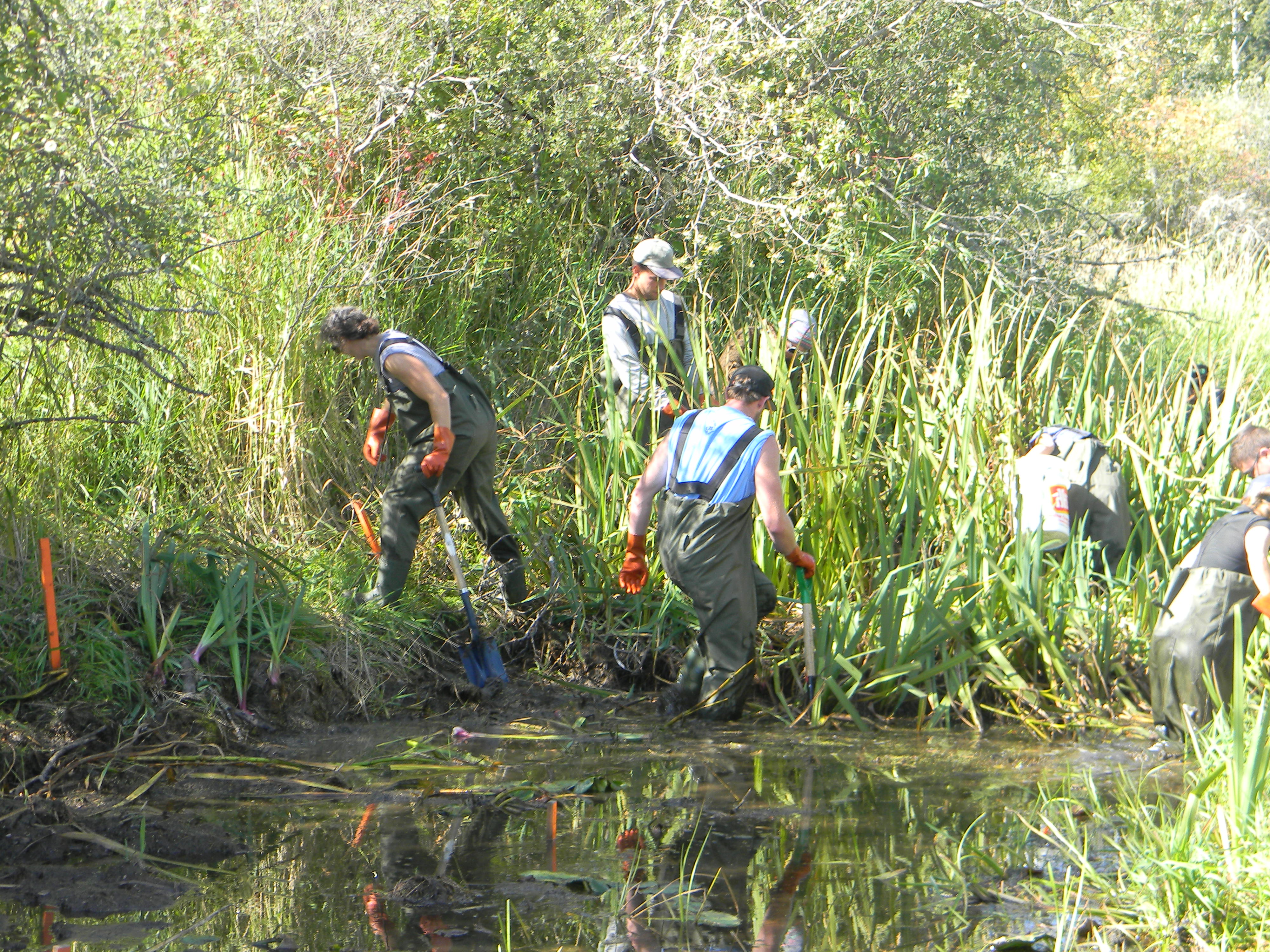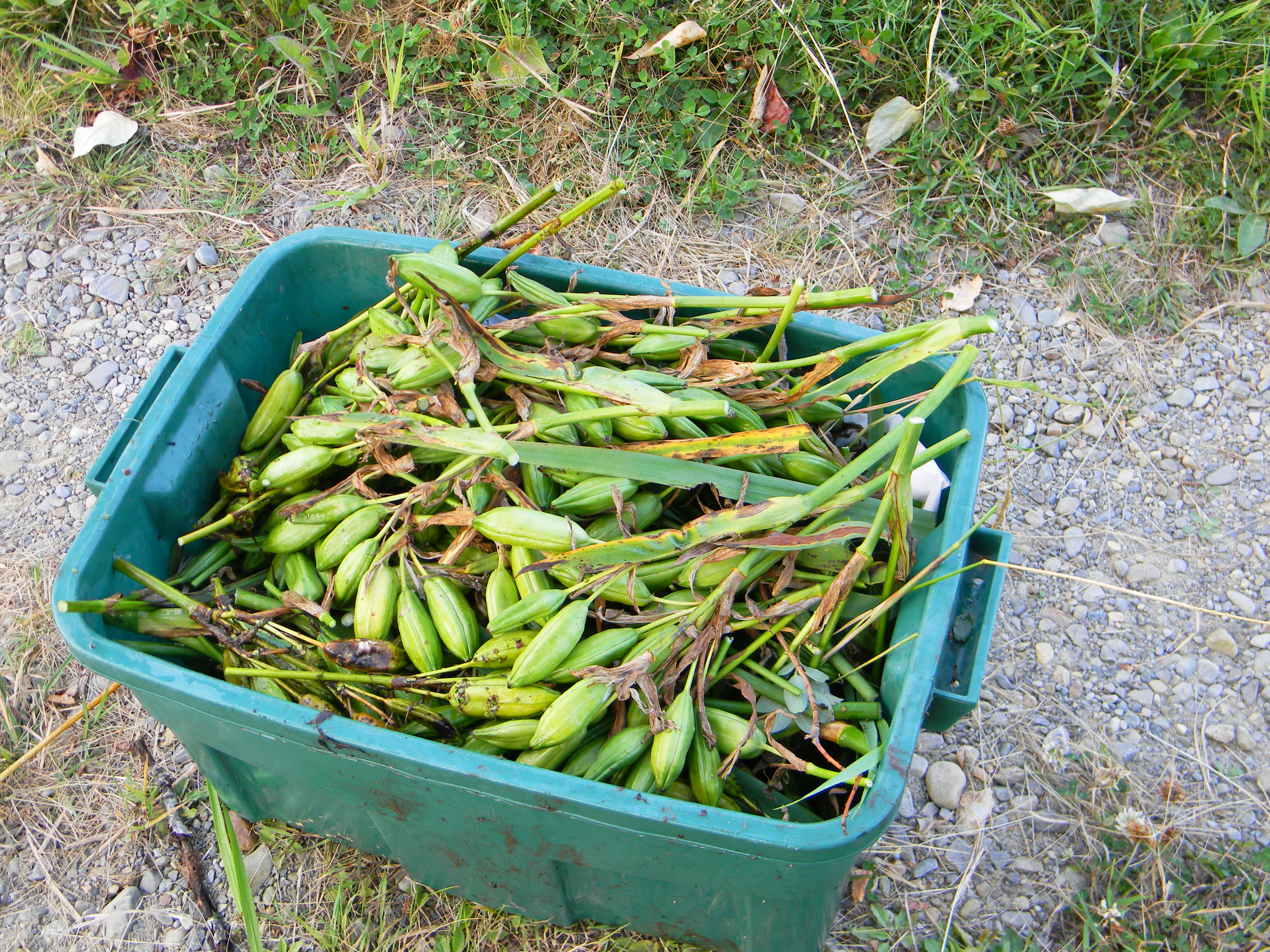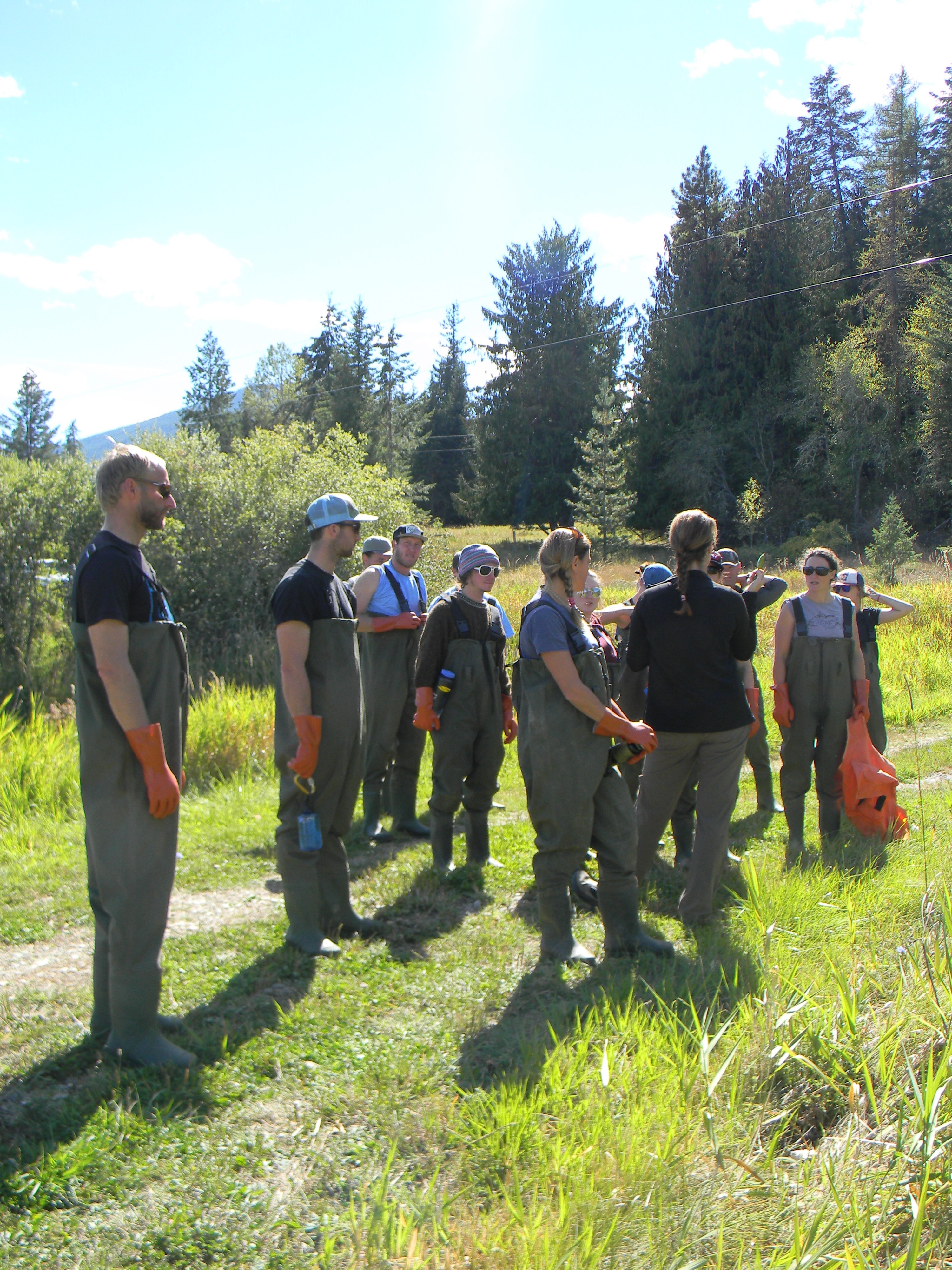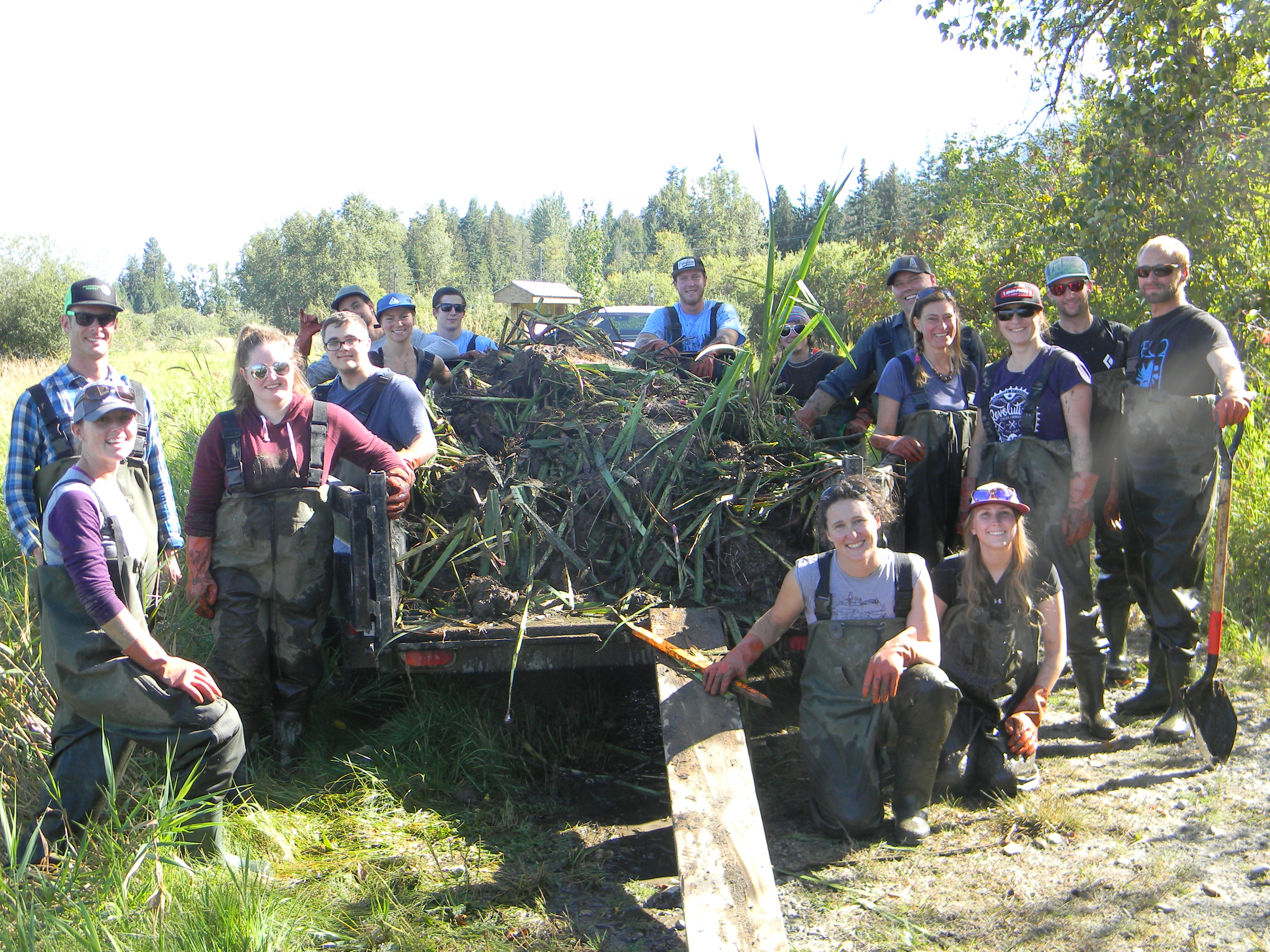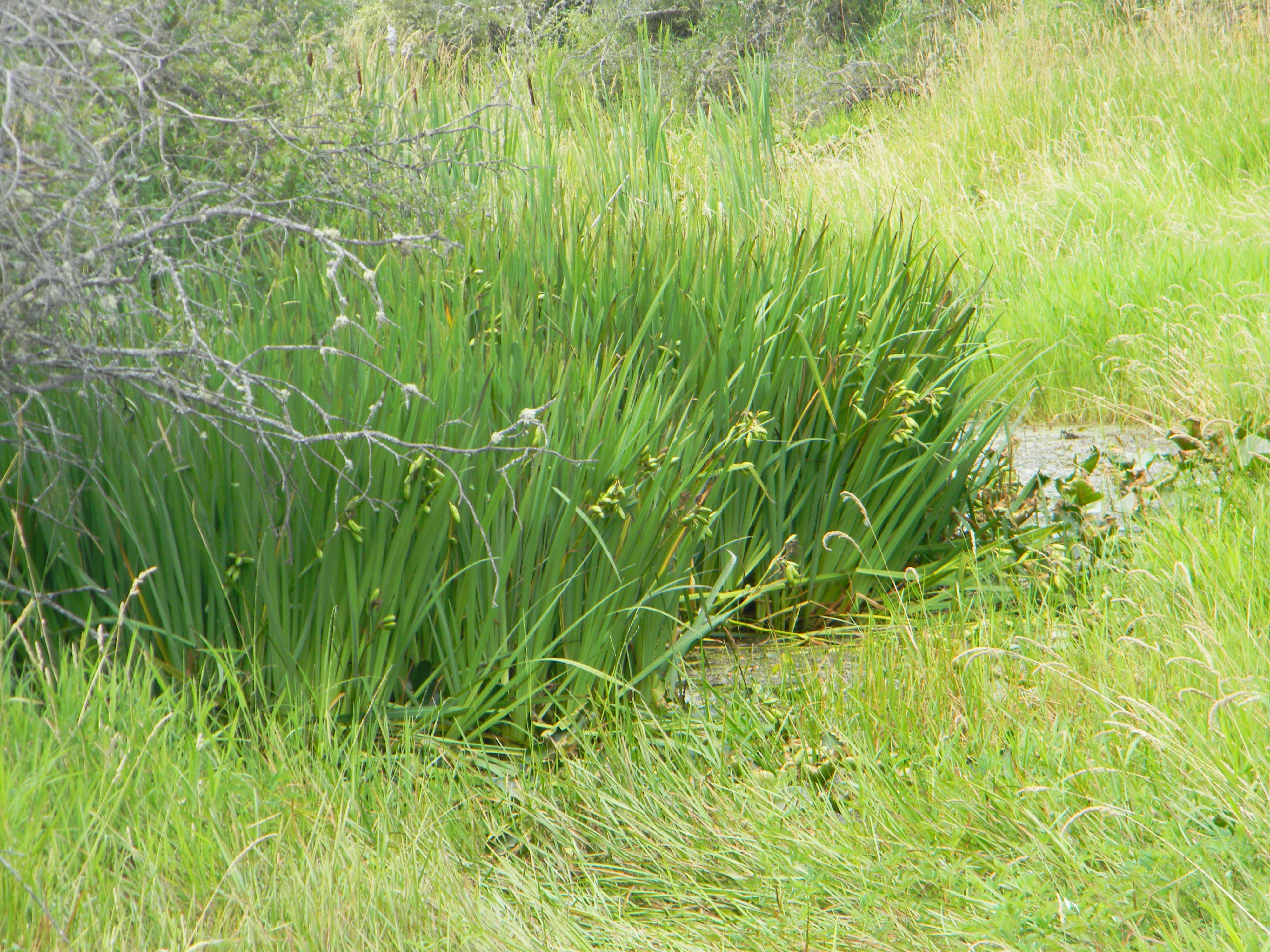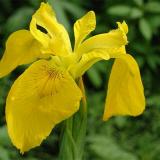
It was a stunning day for volunteers from Selkirk College’s System Ecology class to come out to the Creston Valley Wildlife Management Area on September the 9th to participate in a ‘Community Weed Pull’ of invasive Yellow Flag Iris. Prior to the weed pull students had the chance to meet Marc-Andre Beaucher, Head of Operations for the area. He gave students insight into the background, management and importance of the wetland
Function and Benefits of Healthy Wetlands
- Clean and store our freshwater supply.
- Flood control mechanisms.
- Carbon sinks – remove and store greenhouse gases.
- Support wildlife, the Creston Valley Wildlife Management Area has been deemed a wetland of international importance with close to 400 different wildlife species (including some endangered ones) calling the area home.
- Offers countless recreation possibilities.
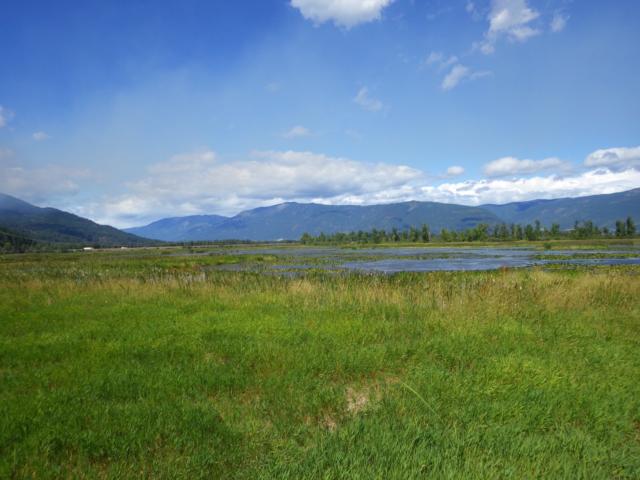
What are the impacts of Yellow Flag Iris?
- Yellow‐flag iris displaces native vegetation along stream banks, wetlands, ponds and shorelines and reduces habitat needed by waterfowl and fish.
- It clogs small streams and irrigation systems, and it dominates shallow wetlands, wet pastures and ditches. Its seeds clog up water control structures and pipes.
- Cattle experience gastroenteritis and acute diarrhea after eating hay containing yellow flag iris.

Prevention and Early Detection
- Be PlantWise and select a non-invasive alternative, such as western blue iris (Iris missouriensis) instead of yellow flag iris for your restoration project or water garden. Additional options can be found by visiting the “In Your Garden” webpage.
- Avoid accidentally introducing non-native plants to surrounding water bodies by installing water gardens a safe distance away. Ensure water gardens are not allowed to overflow to wetlands, streams or
- Properly dispose of garden and yard waste by bagging and disposing of it at your local landfill.
- Prevent plants from spreading from existing populations by washing vehicles, boots and animals that have been in infested. Play Clean Go!
- Report sightings of yellow flag iris plants infestations found in remote locations

Tips for digging out a pesky patch of Yellow Flag Iris
- Small infestations of yellow flag iris can be controlled through hand digging, but caution must be exercised to ensure fragmentation does not occur. Fragmented rhizomes can produce new plants.

- Seed heads can also be cut and bagged to prevent seed production. Yellow Flag Iris seed pods float and by cutting and bagging them we are preventing new infesations from occuring downstream. This action will also prevent water fowl and other wildlife from picking the seeds up and spreading them.

- Smile and be patient….hand digging and dead heading will be required over several years to ensure efficacy.

- Wear gloves and long sleeved shirts, as this plant can cause skin irritation.

- Dispose of ALL plant parts and seeds properly.

Before Community Weed Pull 
After Community Weed Pull 
More information on Yellow Flag Iris.
A BIG thanks to:
- Volunteers from Selkirk College
- the staff at Creston Valley Management Area
- Our funders from Columbia Basin Trust and Eco Action
Your support makes these events possible!